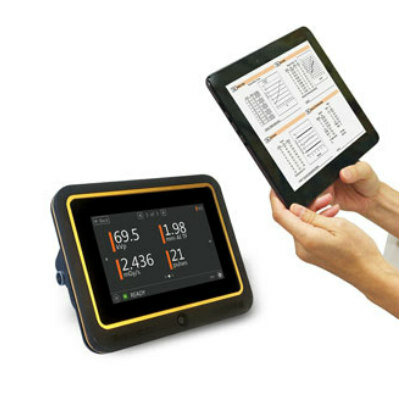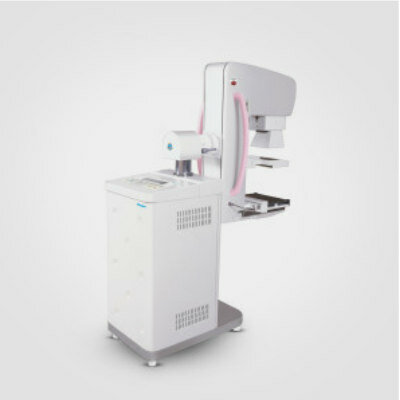Clinical Trials Network Expands Phantom Program for Evaluating Imaging Centers
By MedImaging International staff writers
Posted on 12 May 2009
A prototype chest simulator is the first control implemented to ensure consistency across multiple imaging sites.Posted on 12 May 2009
The SNM Clinical Trials Network (Reston, VA, USA) has reported that a prototype clinical positron emission tomography (PET) oncology imaging simulator--or "phantom"--has been successfully scanned and imaged at four imaging centers. SNM intends to deliver and scan the phantom at an additional 20 imaging centers by the end of September.
SNM's Clinical Trials Network--as part of its mission to ensure standardization and harmonization across multiple imaging sites participating in clinical trials--evaluates images produced by phantoms to ensure that molecular imaging centers are providing consistent and accurate images. Imaging consistency among sites--both in the technology used and images produced--is vital for ensuring quality imaging and quantitative data and is essential to meet U.S. Food and Drug Administration (FDA) requirements for investigational clinical trials.
"The community agrees that a lack of uniformity across imaging sites is a primary barrier to using imaging in clinical trials to facilitate drug development," said Michael Graham, Ph.D., M.D., cochair of SNM's Clinical Trials Network, and director of nuclear medicine at the University of Iowa Carver College of Medicine (Iowa City, USA). "When pharmaceutical companies apply to FDA for approval of a new product, they must first demonstrate a certain level of disease detectability as evidenced by some imaging measurement. Many of the denials of new drugs are based on a rejection of data compiled from poor-quality images or images that don't appear to match those from another similar study."
Effectively scanning phantoms is one part of the overall process that the network will use to "validate" imaging sites for future clinical trials. Imaging of the PET phantoms, which contain a known quantity and distribution of radioactivity, will be used to evaluate each site's imaging capabilities both qualitatively and quantitatively and ensure standardization and compliance with defined protocols in order to ensure consistency across multiple centers in a single trial.
"The network's phantom program draws upon an SNM phantom imaging program that has been operational for over 10 years. In addition, SNM maintains a group of experts who evaluate a center's image quality," said Paul E. Christian, chair of the Clinical Trials Network's Phantom Subcommittee and associate director of molecular imaging at the Huntsman Cancer Institute, University of Utah (Salt Lake City, USA). "Based on these phantom images, experts can help imaging centers by recommending adjustments in the image acquisition parameters to produce images of a very high quality."
The first phantom in use is the oncology phantom (designed primarily to support investigational oncology clinical trials), which was scanned at each of four test sites--the University of Utah, University of Iowa, University of Pennsylvania (Philadelphia, PA, USA), and Mayo Clinic (Rochester, MN, USA)--using a standard imaging protocol. To test the resolution of the imaging equipment at each site, the phantom contained multiple simulated tumors of different sizes. Physicians at each of the four sites were able to evaluate the images and identify all the tumors.
Based on this initial success with the oncology phantom, the network is expanding its phantom imaging program by providing other phantoms to qualified sites in the network's registry. In this regard, a cardiac phantom is beginning testing at the four initial sites, and a brain phantom prototype is being developed and is anticipated to be available by June 2009 to assist a pharmaceutical company with site imaging evaluation for an upcoming phase-3 clinical trial. These three phantoms will be on display at the MI Gateway in the exhibit hall during SNM's 56th annual meeting, June 13-17, 2009, in Toronto, Canada.
The SNM Clinical Trials Network has registered more than 200 imaging sites worldwide, with the goal of validating every site that has registered. As part of the registry, each validated site will undergo periodic retesting to ensure the continuing quality of performance.
SNM (formerly the Society of Nuclear Medicine) is an international scientific and medical organization dedicated to raising public awareness about what molecular imaging is and how it can help provide patients with the best health care possible. SNM members specialize in molecular imaging, a vital element of today's medical practice that adds an additional dimension to diagnosis, changing the way common and devastating diseases are understood and treated. SNM's more than 17,000 members set the standard for molecular imaging and nuclear medicine practice by creating guidelines, sharing information through journals and meetings, and leading advocacy on key issues that affect molecular imaging and therapy research and practice.
Related Links:
SNM














